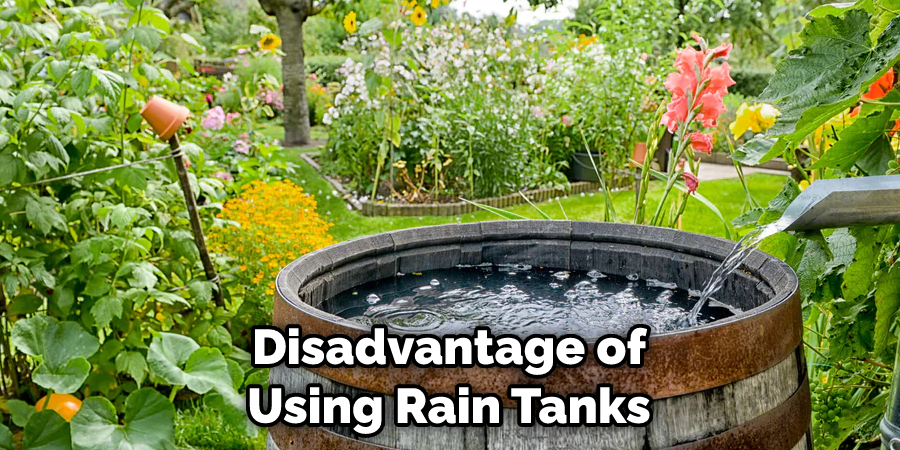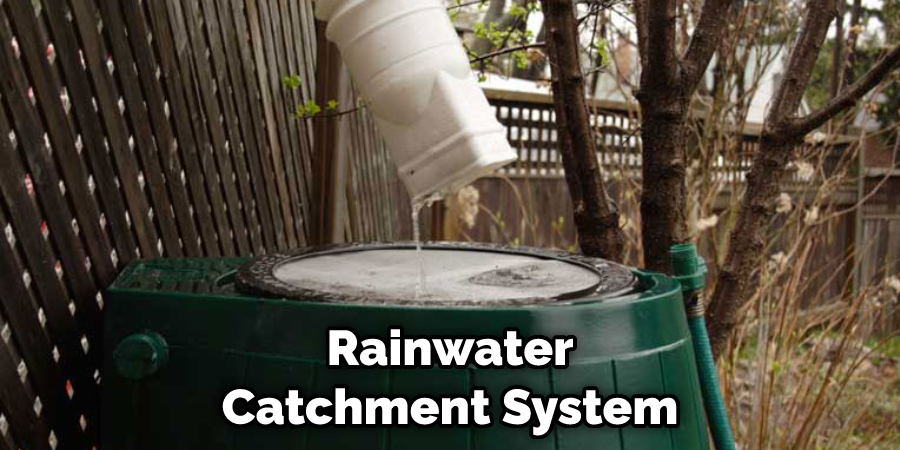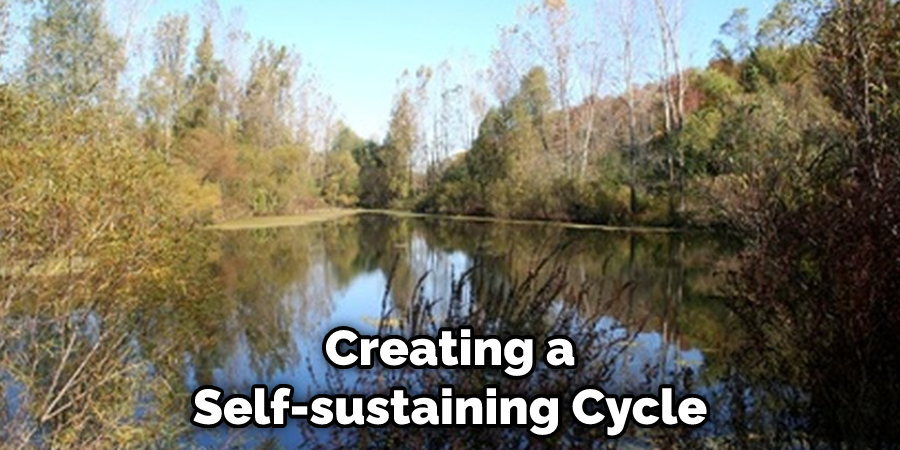Do you have a garden with hydrophobic soil that is resistant to water? If so, you know how frustrating it can be when plants struggle to thrive due to poor drainage. Water doesn’t penetrate the soil properly, leaving plants unable to access necessary nutrients and oxygen.

Fortunately, there are steps you can take to fix your hydrophobic soil and allow for proper drainage! In this blog post, we will discuss what causes hydrophobic soil and provide actionable advice on how to store rainwater for plants. You’ll be able to enjoy healthy soils and vigorous plant growth in no time – read on for more information!
Which Method Should Be Applied to Store Rainwater?
There are a few different methods for storing rainwater, each with its own unique advantages and disadvantages. This section will discuss the most popular methods and the best ways to go about storing rainwater for plants.
Barrels:
Rain barrels are one of the most common methods used to store rainwater that can then be used to water plants. They are low-cost and relatively easy to install and use, making them a popular choice for gardeners.
The main benefit of using rain barrels is that they can be used to capture large amounts of water quickly, but the downside is that it requires frequent maintenance in order to keep the barrel clean and free from debris.
Rain Tanks:
Rain tanks are large, above-ground containers that are used to store larger amounts of water than other methods. While they can be more expensive and more difficult to install than rain barrels, they also have the benefit of being able to hold a lot more water than a barrel. The disadvantage of using rain tanks is that they may be too large for smaller yards or gardens and can take up valuable space in your yard.

Rain Gardens:
Rain gardens are an eco-friendly way to capture and store rainwater that can then be used to water plants. They work by creating an area with native plants and mulch that absorbs the rainfall into the soil so it can be stored until it is needed.
The main advantage to this method is that it can be used to capture large amounts of water, but the downside is that it can take some time and effort to create and maintain the garden.
10 Methods on How to Store Rainwater for Plants
1. Collect Rainwater in a Barrel or Cistern.
One of the most common ways to store rainwater is to collect it in a barrel or cistern. This can be done by placing a barrel or cistern under a gutter downspout to collect the water as it flows off the roof. Barrels and cisterns come in a variety of sizes, so you can choose one that is appropriate for your needs.
Additionally, you should make sure to cover the barrel or cistern with a lid in order to prevent mosquitos and other pests from using the water as a breeding ground. While collecting rainwater in a barrel or cistern is an effective way to store it, the limited size of these containers can make them impractical if you need to store large amounts of water.
2. Use a Rain Barrel Kit.
If you want to collect rainwater but don’t want to DIY it, you can purchase a rain barrel kit. These kits come with everything you need to set up your own rain barrel, including the barrel, spigot, and connecting hardware. Most kits are designed to be used with standard gutters and downspouts.
Simply attach the kit to your existing gutter system, and you’ve got yourself a functioning rain barrel.
Be sure that the barrel is pointed away from your home’s foundation to prevent water damage. Although this is the most expensive option, it is also the easiest option if you don’t want to spend time constructing your own rain barrel.
3. Install a French Drain.
Another option for collecting and storing rainwater is to install a French drain. A French drain is a trench that is filled with gravel and has a pipe running through it. The pipe collects the water as it runs off the roof and drains it into the gravel-filled trench. This method is ideal for areas that experience heavy rainfall.

The water will then be stored in the gravel-filled trench until it is ready to be used. This method also helps keep the soil around your plants from becoming too saturated with water, which can lead to plant root rot. Installing a French drain is an easy way to make sure that your plants have enough water during periods of heavy rainfall.
4. Use an above-Ground Pool.
If you have an above-ground pool, you can use it to store rainwater for your plants. Simply place your pool under a gutter downspout to collect the water as it runs off your roof. You can then use a hose or pump to transfer the water from the pool to your plants. Make sure to use a pool cover when it’s not in use to reduce evaporation and keep the water clean.
Additionally, try adding a mesh screen over the gutter to help keep debris from clogging up your pool. With a little bit of effort, you can maximize the water you collect from rainfall and keep your plants healthy and hydrated.
5. Use a below-Ground Pool.
If you have a below-ground pool, you can also use it to store rainwater for your plants. To do this, simply place a tarp over the top of your pool and secure it around the edges so that no water can escape. Then, when it rains, the water will collect on the tarp and seep into the ground, where it will be stored in your pool.
This method is great if you have a large area of land that requires a lot of water. In addition, the tarp will protect your plants from harsh elements and keep them safe from pests. Additionally, the tarp can be easily removed when you need to remove the water for your plants.
6. Construct a Dry Well.
A dry well is another option for storing rainwater underground. To construct a dry well, you will need to dig a hole in your yard and line it with gravel or rocks. Then, place a pipe in the center of the hole and cover it with more gravel or rocks so that water can seep through into the hole. The water will be stored in the well until it is needed.

This is a great way to store a lot of rainwater in an area with limited space. The water can then be accessed from the pipe and used to water the plants in your garden or landscape. Just make sure that you keep an eye on the level of water in the well and top it up with more rainwater when needed.
7. Use a Rain Chain.
Rain chains are decorative devices that can be used to collect and store rainwater for your plants. They consist of linked metal or plastic cups that hang from a gutter downspout and catch the falling rainwater. The water then runs down the chain and into a collection bucket or basin. The advantage of using a rain chain is that it adds an attractive and decorative feature to your home while also providing the benefit of collecting much-needed rainwater for your plants.
Be sure to choose a rain chain made from corrosion-resistant materials, such as stainless steel or plastic, and make sure it is securely attached to the gutter downspout. Additionally, you should ensure that the collection bucket or basin has enough capacity to collect a large volume of rainwater. This will ensure that your plants get enough water during those dry spells when rainfall is scarce.
8. Build a Rainwater Catchment System.
A rainwater catchment system is an efficient way to collect and store large amounts of water for your plants. To build one, you will need to dig trenches around the perimeter of your yard or garden and line them with gravel or rocks. Then, place a pipe in the center of each trench and cover it with more gravel or rocks so that water can seep through into the trenches. You can also include a reservoir tank or underground storage container to collect the water.

After you’ve constructed your rainwater catchment system, it’s important to inspect it periodically to ensure that there are no leaks. Additionally, rainwater can contain contaminants like dirt and debris, so you may want to consider filtering it before using it for your plants. With a rainwater catchment system, you can easily store rainwater and use it to keep your plants healthy.
9. Install an Irrigation System.
Installing an irrigation system is a great way to store and use rainwater for your plants. There are several types of irrigation systems available, including sprinkler systems and drip irrigation systems. With an irrigation system in place, you can collect the rainwater and distribute it evenly to your plants.
This can help to ensure that your plants get enough water and reduce the amount of water wasted. It also allows you to control when and how much rainwater is used on your plants. Installing an irrigation system can be a bit expensive, but it is worth the investment, as it will save you money in the long run.
10. Use Aquaponics.
Aquaponics is a combination of hydroponics and aquaculture. In an aquaponics system, fish waste is used to fertilize plants that are grown in a container. The plants are then harvested and used to feed the fish, creating a self-sustaining cycle. Aquaponics is an excellent way to store rainwater because the plants use the water and nutrients, while the fish provide additional fertilizer. Aquaponics systems are easy to install and can be used in both indoor and outdoor settings.

They require minimal maintenance and will provide a steady supply of nutrient-rich water for your plants. With proper care, an aquaponics system can produce healthy, thriving plants for years to come. Although aquaponics systems require a significant initial investment, they are quickly becoming popular with home gardeners due to their low maintenance and high yield.
Things to Consider When Storing Rainwater for Plants
When storing rainwater for plants, it is important to take a few key factors into consideration. Homeowners should ensure the containers they are using are clean and free from any contaminants or chemicals that could potentially harm their plants. Additionally, it is important to properly label the containers and keep them away from direct sunlight in order to reduce algae growth.
Homeowners should also consider the size of their container when storing rainwater. Containers that are too large will take up valuable space, and containers that are too small may not provide enough water for the plants’ needs. Furthermore, homeowners should ensure the containers have a tight-fitting lid so that debris and other contaminants do not find their way into the water.
In addition to considering the size and construction of the containers, homeowners should also consider where they are storing their rainwater. Containers should be placed in an area that is not subject to flooding and that is easily accessible for regular maintenance. Furthermore, it is best to keep the containers away from trees or other sources of shade to ensure the water remains free from outside contaminants.
Finally, it is important to check containers regularly to ensure they are not leaking or overflowing. Additionally, homeowners should be sure to replace their rainwater with fresh water every few weeks to prevent any bacterial growth.

Conclusion
Storing rainwater for plants is a great way to save money and water. Rain barrels are an easy and efficient way to store rainwater, and there are many different types of rain barrels available on the market.
Be sure to choose a durable rain barrel that fits your needs. With a little bit of planning, you can easily set up a system to help your plants thrive all year long. Thanks for reading, and we hope this has given you some inspiration on how to store rainwater for plants!
About
Outdoor Fixes is a distinguished figure in the world of Diy design, with a decade of expertise creating innovative and sustainable Diy solutions.
His professional focus lies in merging traditional craftsmanship with modern manufacturing techniques,
fostering designs that are both practical and environmentally conscious. As the author of diy,
outdoorfixes delves into the art and science of outdoorfixes-making, inspiring artisans and industry professionals alike.
Education RMIT University
(Melbourne, Australia) Associate Degree in Design (Outdoor Fixes) Focus on sustainable design, industry-driven projects,
and practical craftsmanship. Gained hands-on experience with traditional and digital manufacturing tools, such as CAD and CNC software.
Nottingham Trent University
(United Kingdom) Bachelor’s in outdoorfixes.com and Product Design (Honors) Specialized in product design with a focus on blending creativity with production
techniques. Participated in industry projects, working with companies like John Lewis and Vitsoe to gain real-world insights.
Publications and Impact
In diy, Outdoor Fixes his insights on indoor design processes, materials, and strategies for efficient production.
His writing bridges the gap between artisan knowledge and modern industry needs, making it a must-read for both budding designers and seasoned professionals.

